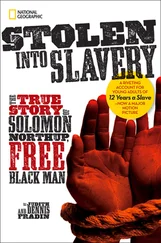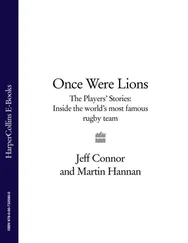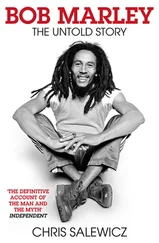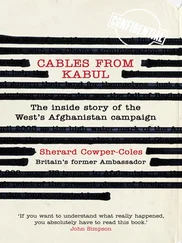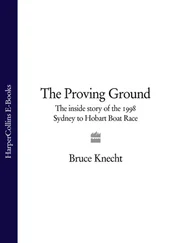For lunch we had shepherd’s pie and a barrage of questions. Sanders was feeling us out, gauging our responses to various probes. ‘I don’t like the name Viz ,’ he said at one point, wiping mince from the side of his mouth with a serviette. He may only have been in his fifties, but he ate like a ninety-four-year-old. I didn’t rise to the bait. After the main course Sanders got down to business. IPC were interested in the idea of a comedy magazine for students – a younger version of Private Eye , as he described it. They hadn’t got very far with the idea themselves and when they saw Viz on the telly they wondered whether we might be the people to produce it for them. They were proposing a fortnightly publication date and a twenty-four-page magazine, produced by us from a studio in Newcastle. But first of all they wanted to put us to the test. Sanders offered to pay £1,500 for a dummy issue that would have to be ready by 31 May. We agreed. Once they saw the dummy they would then decide whether or not to proceed with the plan.
After the meeting Bob Paynter gave us a brief tour of the Buster comic studio where we marvelled at some of the artwork. We asked whether it was true that they regularly reused old artwork and simply updated the wording. Our evidence for this was that we often spotted ancient vehicles in Buster cartoons – vintage lorries, cars and motorbikes. Bob told us they didn’t, all their cartoons were new, and the antique vehicles were the work of an eighty-year-old comic artist who still worked for them and didn’t get out the house very much these days. After our tour we headed out into the fresh air and back across the river. It was all a bit much to take in and we wandered across Waterloo Bridge, through Trafalgar Square and along the Mall in virtual silence before stopping for a rest in St James’s Park. I sensed a tiny bit of tension in the air and eventually Jim broke a longish silence with a question. ‘What are we going to do with the £1,500?’ Simon seconded it. I remember being furious and trying not to show it. There was me thinking, ‘How the fuck am I going to produce a twenty-four-page magazine in just one month when it currently takes six months to produce a single issue of Viz ?’, and all they were thinking about was divvying up the money. I said I would use the £1,500 to finance production of the dummy, paying for materials, proper typesetting and darkroom work. Then whatever was left over we could split equally between the three of us. I could quite reasonably have demanded more as I’d be the one putting the dummy together and providing most of the cartoons, but a three-way split kept everyone happy. And, besides, I didn’t give a shit about the money. It was the daunting prospect of the dummy proving successful that was worrying me. Doing one comic by 31 May was going to require a miracle. Repeating the trick every fortnight from then on would be absolutely impossible.
Jim Brownlow
I didn’t much trust IPC, so when I got home I wrote to John Sanders asking him to confirm his offer in writing. Then I wrote again asking specifically about the copyright situation. I wanted his assurance that £1,500 was only paying for an option to buy this comic, and if they turned it down they’d have no rights to keep or use any of the material. The dummy I put together was a hotchpotch of the best of Viz to date, including a lot of material from issue 11 which had just gone to press. I redesigned old news features, had them properly typeset (in the comic I just typed the text columns on a typewriter) and obtained proper photographs to go with them from IPC’s photo library. I put in what I thought were the best of our cartoons, like Mr Logic, Big Vern and Paul Whicker, and I redrew the first episode of Billy the Fish and stretched it out to cover two pages instead of two lines. I realized I would have to spread material pretty bloody thin if Viz was ever going to be a fortnightly. At our meeting John Sanders had hinted that the political content would need to be increased so I made up a new story about a lorry driver who’d lost a consignment of cruise missiles as a token gesture not quite in that direction. I also commissioned a strip from Mick Kidd of Biff, later of Guardian fame, who had been a Viz distributor, as opposed to contributor, in London at the time.
After sending the dummy off on time I was expecting a prompt, definitive response from IPC, but weeks passed and I heard nothing. We got our money, but no news. Then Bob Paynter rang up and asked for some additional material. He was making a few slight changes and wondered if he could have something a wee bit more political perhaps. Then in late July I got a shock when he sent me a copy of what he called ‘the actual dummy’. This was what he proposed to put before the board of directors. I was flabbergasted. The comic had been so much altered it was barely recognizable as our work. They’d truncated most of our cartoons, altered titles, changed punchlines and replaced entire chunks of the magazine with crap they’d written themselves. Some of the alterations were ridiculous. They’d changed the name Viz Comic to Viz Funnies. A cartoon called Frank the Princess had been altered to make the subject, Frank, gay. With a few subtle changes they’d turned it from a surreal fairy story into homophobic garbage. Sid the Sexist’s name had been changed to Sid the Smooth-talker. And in Mr Logic the word ‘penis’ had been replaced by ‘donger’. For fuck’s sake! They’d missed the entire point. Mr Logic wouldn’t say donger. He would say penis.
I wrote to John Sanders and highlighted thirty or so similar instances of them ruining jokes. I also pointed out that their treatment had robbed the magazine of an important but difficult to define quality, the fact that the joke was on us. In our hopeless prizes, botched competitions, rubbish letters and pitiful news features, Viz was taking the piss out of itself more than other people. In their treatment of the dummy IPC had done away with this entirely.
For the next few months we continued to send additional material to London for a new and definitive version of the dummy, but I was getting more and more frustrated at their inability to know a good thing when they saw it and their insistence on tinkering about with everything. It gradually dawned on me that I could never work with these people. While a final decision was being awaited I had to go to London again. The Hostages, the band that my mate Walter had got onto the Enterprise Allowance Scheme, had just been signed up by EMI. They’d been underpaying me for posters for ages and now they wanted to make it up by asking me to design the sleeve for their first hit single. Walter took me to EMI’s head offices in Manchester Square to be given a design brief by the executive in charge. His brief was very simple – I wasn’t doing the sleeve. Instead he wanted me to fuck off, and some mate of his with an airbrush would be doing the sleeve instead. It wasn’t the most positive outcome I’d ever had from a meeting, but my visit to Manchester Square did prove useful for another reason. On our way into the EMI offices we witnessed a remarkable scene as the band Tight Fit tried unsuccessfully to gain admission at the front door. They’d had a couple of hits a few years earlier, but apparently their credit was no longer good. There they were, dressed in exotic black leather outfits, screaming at the doorman. ‘Don’t you know who we are? We’re Tight Fit!’ But he wouldn’t let them in. I was able to use this story as an amusing music industry anecdote for several years to come . . . until the day I met Pete Waterman. But more of that later.
By October 1984 I still hadn’t been given a decision by IPC so I wrote to John Sanders with an ultimatum. They could either accept the dummy or give us our artwork back. On 22 November he replied:
Читать дальше




